Art Nouveau schools of architecture
Each new round, a new direction in world architecture is inextricably linked with milestones in the history of social development of human society, its progressive achievements. Art Nouveau style emerged in the late nineteenth century against the backdrop of the industrial boom, became the embodiment of his era.
Art Nouveau, Russian Art Nouveau, calling it in his own way in each country, it was accepted and embodied in the architecture around the world. Art Nouveau absorbed the best features of Oriental exoticism, it is rich with elements of the Rococo and Gothic. Art Nouveau easily superseded its predecessor, Eclecticism, organically integrating into the new possibilities of construction. The use of stone, glass and metal contributed to the creation of flowing lines and whimsical arabesques.
Characteristics of the Art Nouveau style
Art Nouveau is characterized by a great variety of characteristic elements due to the synthesis of a number of directions in art - painting, plastic arts, architecture, applied art.
- Buildings are striking visual lightness and unusual, asymmetric shape. The interiors are spacious, and there are practically no straight lines and corners.
- The structures are made of light aluminum and traditional reinforced concrete, the spans are of arched, cable-stayed and girder types.
- The prevailing color scheme pastel, but also used metallic, silver, fluorescent dyes. Abundance of vegetal ornaments.
- The doors are often offset to the side of the center of the building, their types are varied - from rotating to telescopic.
- Large, sometimes - all-wall windows. Mechanism swing, hinged, swivel or sliding.
- The lines of the forms are free, resembling the natural configuration of nature. Each side of the building has a good perspective, where the decor and facade are seen in a different light, while the overall picture is stunningly harmonious.
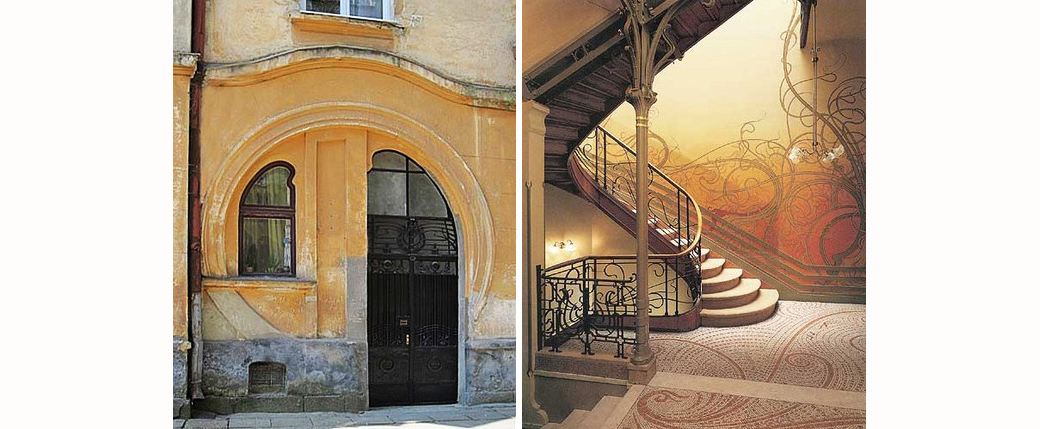
Belgian school of Art Nouveau
The generally recognized pioneer of Art Nouveau was Victor Horta - the Belgian architect, with whose "light hand" in building they began to apply glass and metal - new materials at that time. Horta's creations are easily recognized by their distinctive appearance: metal binding of fantasy plant forms, large areas of glazing, careful study of the smallest details, down to the door handles, to bring them to a single style. In 1893, the first building in the world in the Art Nouveau style, the Tassel House, was designed by Horta. But the most interesting in terms of innovative approach are the buildings of department stores, such as Brussels "Innovation", built by Horta in 1901. In these buildings, the facades are a continuous glazed surface, resting on metal frames.

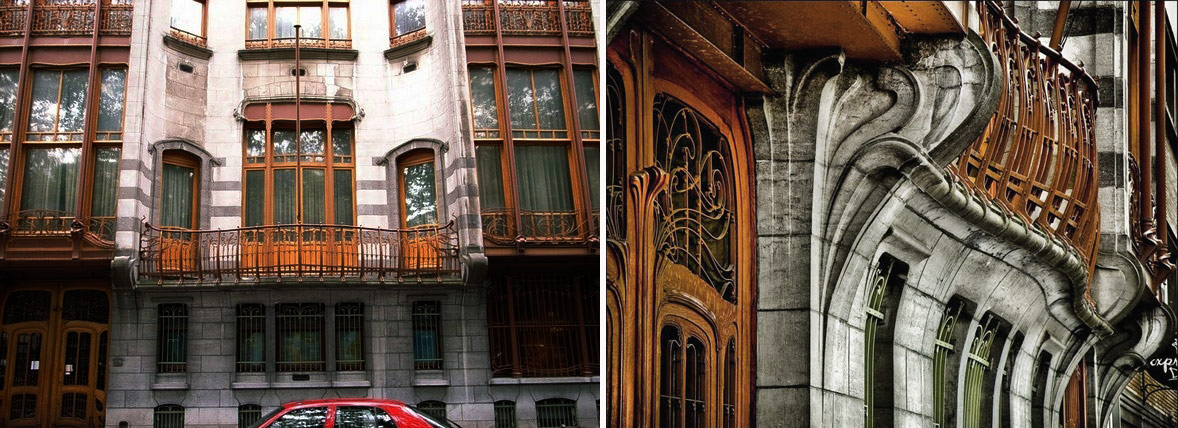
FRENCH SCHOOL
A little later, after being introduced to the work of Victor Horta on a trip to Brussels, the Frenchman Hector Guimard begins to create in the Art Nouveau style. Under the strongest impression of Horta's graceful, airy buildings, Guimard builds the world-famous Castel Beranger, or Castel Derange (French for "disorderly"), as Guimard's contemporaries called it. The castle has all the classical features of Art Nouveau: asymmetrical shape, unusual arrangement of windows (on the diagonal), balconies, portals, uneven surface of masonry combined with brick and bright stained glass in the windows.
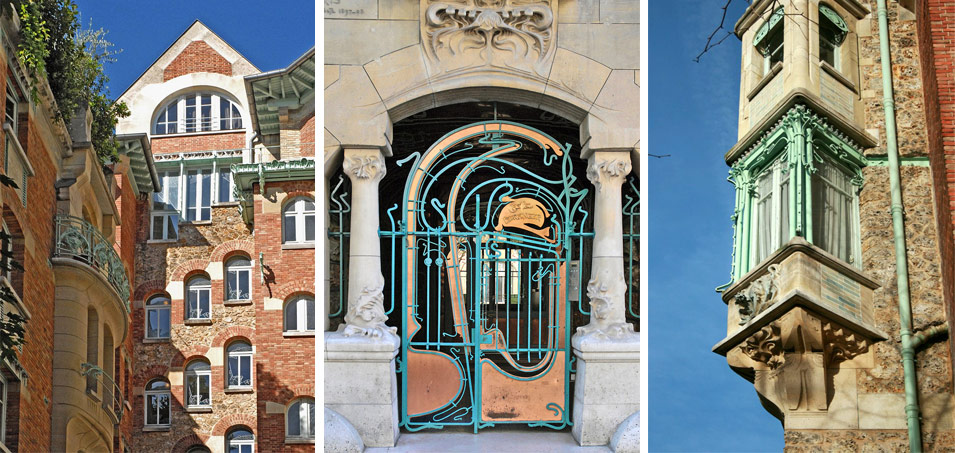

THE SPANISH SCHOOL
Spanish school is characterized by originality, finding the most harmonious forms in the Gothic and Islamic architecture.
Antoni Gaudi's constructions fit so realistically into the surrounding scenery that one gets the feeling of their naturalness. Extraordinary talent and imagination of the author have given birth to two dozens of amazing projects. Decorative elements are the main distinguishing features of the architect's style. Casa Vicens, a house which seems to have risen from the pages of a children's fairy tale, was built using polychrome ceramic effects: the asymmetry of the façade, the broken roof and the rich ornamentation. The mansion El Capriccio is no less original, and the bizarre Park Guell - a whole series of unique buildings, as if they grew out of the ground, wriggling like a snake, "endless bench", columns, like trees.
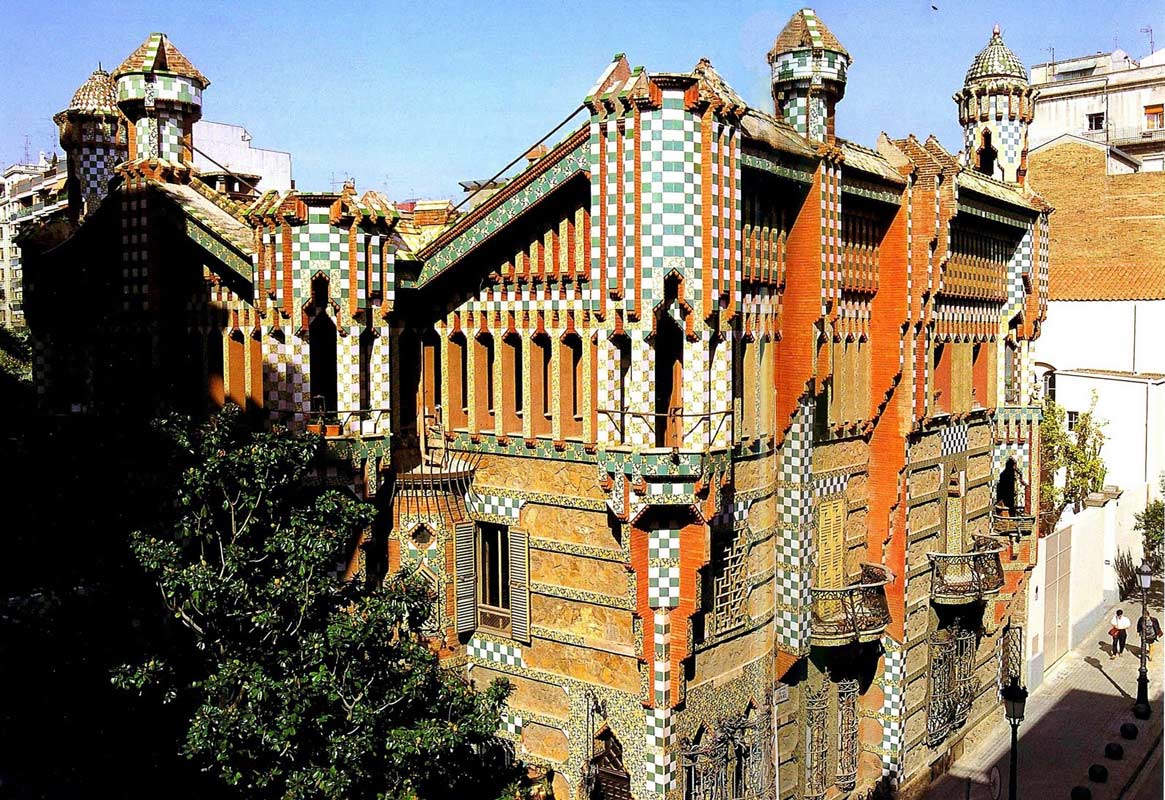
RUSSIAN SCHOOL
Art Nouveau in Russian - all the characteristic trends of the style, plus folk folklore. The designs are based on the features of Byzantine churches and boyar mansions from the seventeenth century: openwork designs with many arched elements, high spans, three-dimensional space of the rooms, large stained glass windows. Decorations are female images with vines entwined in the hair, mosaic drawings, plant forms.
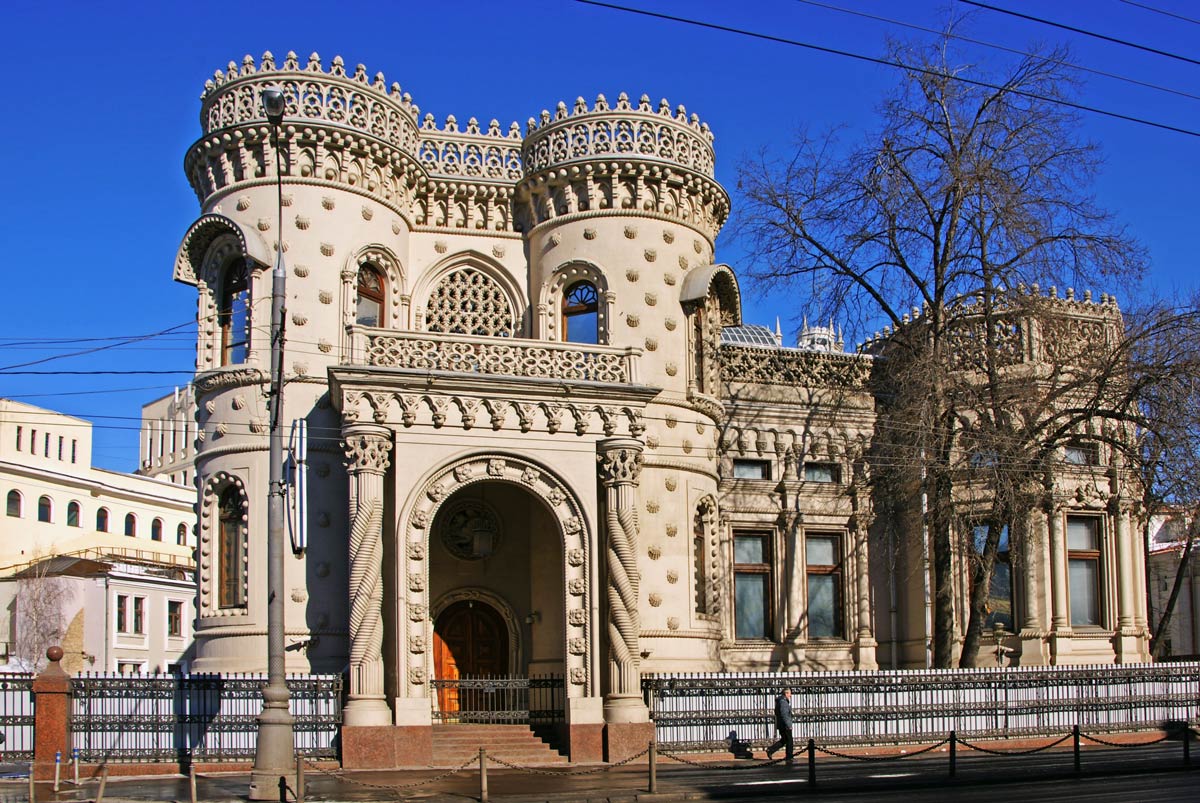
In Moscow there are many late 19th and early 20th century buildings that were built in the Art Nouveau style. The adherents of the style were architects F.O. Shechtel, V.F. Valkot, F.F. Voskresensky, A.U. Zelenko and others.
The Otto List's mansion, built by Lev Kekushev in 1899, is remarkable for its asymmetrical shape, the windows of different sizes and appearances, the rich and expressive majolica mosaic over the arched entrance, and the small square-shaped loggia with a column above the first floor at the corner of the building.
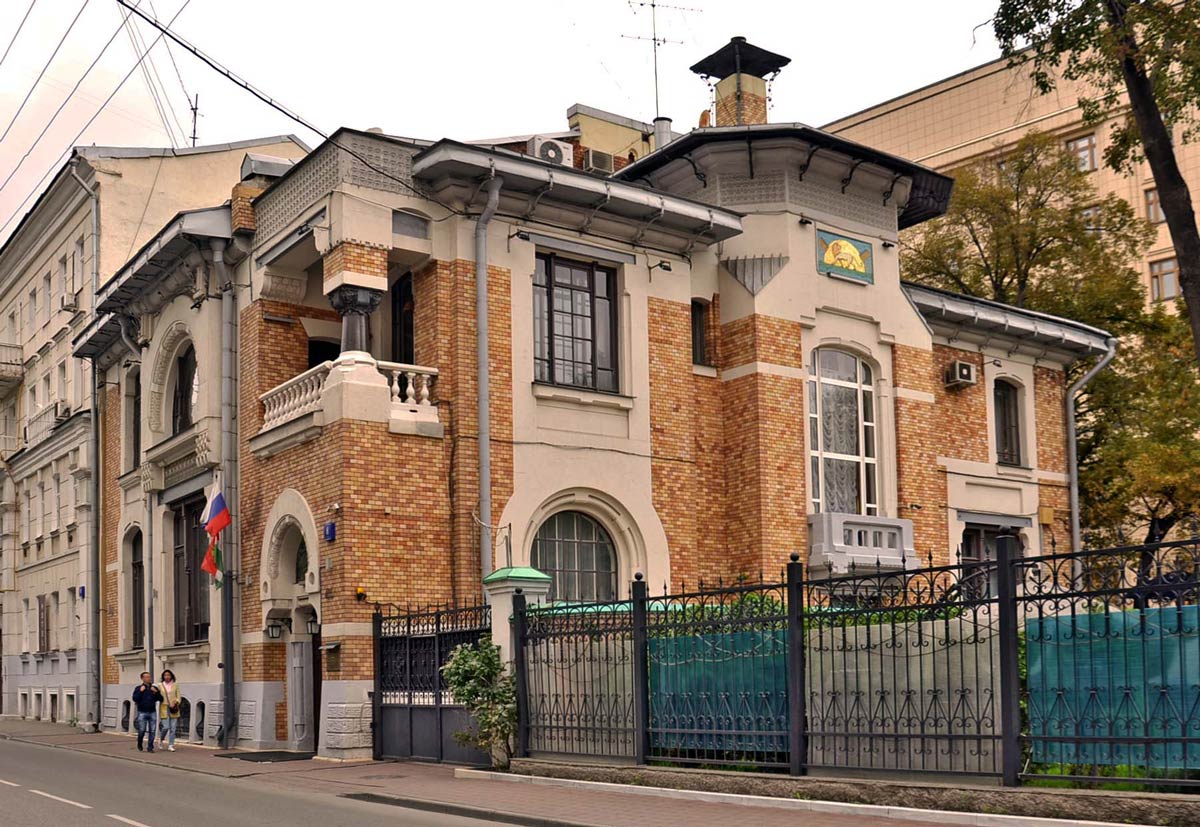
On Prechistenka is the lucrative Isakov house, also built by Kekushev. It is a charming building. The house was built for the merchant Isakov in the early 20th century, and it has a large scale, but amazing openwork and lightness. The French style is evident in the design: the windows not only vary in size and shape, but also in their binding; on the central axis is a balcony with openwork wrought-iron lattices, and the edges are decorated with bay windows. The brick facade has rounded corners, a frieze of patterned stucco is made in the upper part, and the sides are decorated with female figures.
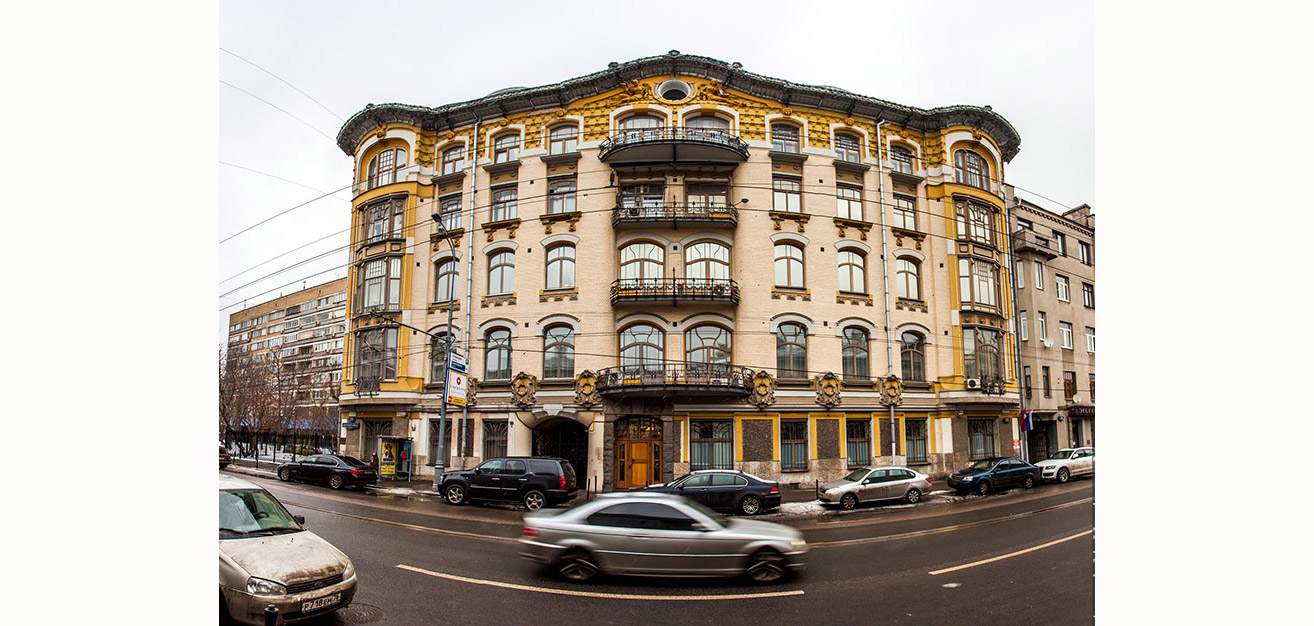
In St. Petersburg at the beginning of the 20th century, a new generation of style emerged - "Northern Art Nouveau", the most important feature of which was the use of marble and granite for decoration of the facades in conjunction with metal and wood elements.
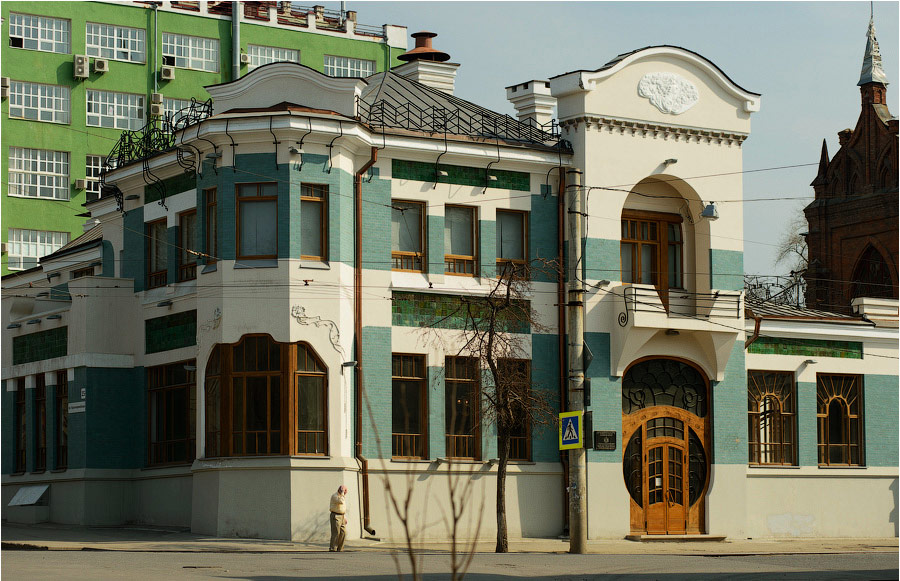
Throughout the history of the style several directions of Art Nouveau were identified. In Germany it was called Jugendstil, in Austria - Secession. Rationalism, neoclassicism and even Berlin, Paris or Riga Art Nouveau are described. The dominance of the style lasted for a quarter of a century, replaced by Expressionism and Functionalism..
Practice
If you want your cottage to stand out from the rest - decorating in the Art Nouveau style will be the perfect solution.
- Use smooth, flowing lines in the design of the building, similar to the lines observed in the surrounding nature. Avoid sharp corners, more curls and bends. Regardless of the size of the structure, it should have a visual lightness.
- Materials for construction can be any - brick, wood, metal. An excellent solution would be a combination of different textures: wooden facade, decorated with rubble stone or red brick. Also, in the finishing of the facade may be dominated by glass, metal and iron elements. Rounded mosaic elements, moldings, statuettes are topical.
- Colors - natural, restrained, perhaps with bright inclusions, but without a hint of pomp.
- Windows - necessarily large - can be placed asymmetrically, the same applies to the main entrance.
- Balconies and bay windows are offset from the central axis, decorated with columns, possibly in the form of spirals. The presence of "twisted" elements is typical of projects of houses in the Art Nouveau style - spiral staircases, a special arrangement of rooms inside.
- The surrounding landscape should emphasize the unity of style. At the site necessarily have fountains, ponds, a variety of openwork arches and pergolas, gazebos with stained glass windows. The layout includes sinuous, flowing lines, dominated by natural stone, wood and forged elements. The garden should have plenty of space and a few single accents - large trees or group plantings.
- Order your facade design with us.